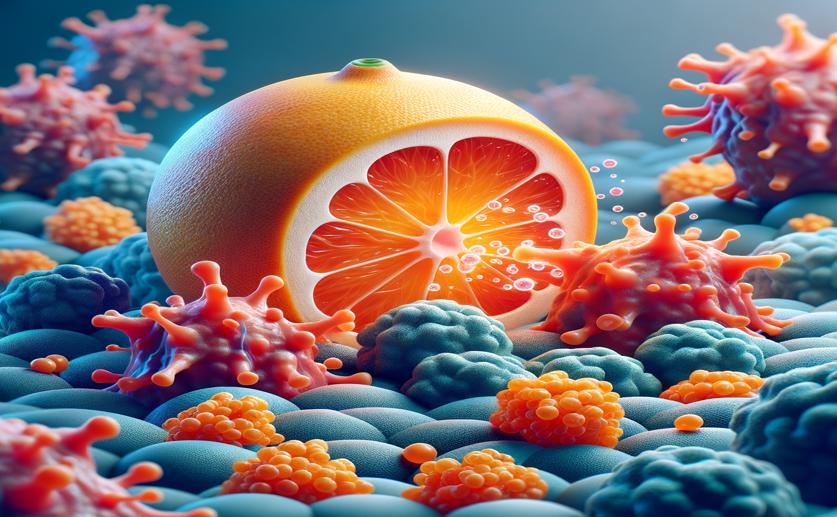
Naringin Causes Cell Cycle Arrest and Cell Death in Nasal Cancer Cells
Jim Crocker
27th July, 2024

Image Source: Natural Science News, 2024
Key Findings
- Researchers from China Medical University, Taiwan, found that naringin, a compound in grapefruit, is effective against nasopharyngeal carcinoma (NPC) cells
- Naringin stops NPC cells from dividing by causing cell cycle arrest at the G1 phase
- Naringin induces programmed cell death (apoptosis) in NPC cells through mitochondrial dysfunction and other pathways
References
Main Study
1) Naringin Induces ROS-Stimulated G1 Cell-Cycle Arrest and Apoptosis in Nasopharyngeal Carcinoma Cells.
Published 26th July, 2024
https://doi.org/10.1002/tox.24378
Related Studies
2) The Evolving Epidemiology of Nasopharyngeal Carcinoma.
3) The incidence and risk of second primary cancers in patients with nasopharyngeal carcinoma: a population-based study in Taiwan over a 25-year period (1979-2003).
4) Emerging biomarkers in head and neck cancer in the era of genomics.



 25th July, 2024 | Jenn Hoskins
25th July, 2024 | Jenn Hoskins